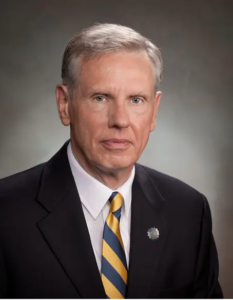CHARLESTON, W.Va. — State higher education officials plan to present a newly proposed funding formula for West Virginia’s colleges and universities to state lawmakers during next year’s Regular Legislative Session.

During interim meetings last week, state Higher Education Policy Commission Chancellor Dr. Sarah Armstrong Tucker laid out several goals they hope to achieve based on a model the state of Tennessee is currently using.
Tucker told lawmakers before the Joint Committee on Finance every institution in the state has different funding priorities. She said what Concord University needs could be different than what West Virginia University needs to spend their funding on.
“One of the things that we’ve heard loud and clear from past formulas is that our institutions are not the same. They have different missions. We need to account for that mission differentiation in the model,” she said.
The proposed model includes emphasis on students transferring institutions within the state.
“We don’t have a transfer culture in the state of West Virginia. It’s something that I think we need,” Tucker said. “We have a lot of people for whom going directly into a baccalaureate institution is not the best decision. They may have children that they have at home and have to work to be able to go to school.”
Tucker said they’re working to determine what jobs are needed most in the state so the pay off is better for students graduating with degrees in those fields and for the local economy.
“One of the main differences between our model and Tennessee’s model, which I hope will become a standard across the country, is that we are waiting for high demand fields to come up with what are those programs and what are those jobs?” she said.

Presidents and representatives of several state colleges and universities also spoke before the committee including Bluefield State College President Robin Capehart.
Capehart criticized parts of the plan saying funding should go toward grant programs to help low income students.
“An approach better than giving money to the institutions would be to increase the current need based Higher Education Grant which would provide help for low income students who would in turn allocate the money by choosing which institution would best address their particular needs,” he said.
Funding allocation also should not depend on the timeliness of degree completion, Capehart said.
“Our graduates do not necessarily all graduate in eight semesters. Very few of them do because of the backgrounds that they come from in Mercer County, McDowell County and some of the more distressed parts of the state,” he said.

Lawmakers appropriate more than $400 million annually for the state’s public colleges and universities, but WVU President Gordon Gee said it’s typically in a “scattered” manner.
“There’s a lot of community and local politics that go into this. I think the certainty for higher education in the future is going to be very important because what we’re discovering is that higher education is really the economic engine that will drive this state forward if we do the right things,” Gee told the committee.
Gee, who said he’s “very enthusiastic” about the plan, reiterated Tucker’s statements that each institution has different needs.
“To try to make a one size fits all would be a great detriment particularly to the small institutions,” Gee said. “We should recognize the differences.”

Marshall University and the West Virginia Council of Presidents representing the remaining in-state colleges and universities also support the model.
Dr. Casey Sacks, acting president of BridgeValley Community and Technical College, said community colleges are concerned about using job placement and wages to determine funding. The model looks at how much graduates earn.
“Wages and jobs vary widely by program. If you look at students who complete engineering degrees, they clearly make more than students who are in early childhood education,” Sacks said. “We have to think about programs not just by wage, but by the outcome for our state and for our labor market.”
Discussions began at the beginning of 2020 prior to the COVID-19 pandemic and resumed earlier this year.
The HEPC will need to meet and finalize the details before submitting a recommendation to the state Legislature.
“I think we’re very close to putting numbers behind this formula,” Tucker said.
"hear" - Google News
November 21, 2021 at 07:15PM
https://ift.tt/3CL4p0k
State lawmakers to hear new higher education funding formula during 2022 session - West Virginia MetroNews
"hear" - Google News
https://ift.tt/2KTiH6k
https://ift.tt/2Wh3f9n
Bagikan Berita Ini















0 Response to "State lawmakers to hear new higher education funding formula during 2022 session - West Virginia MetroNews"
Post a Comment